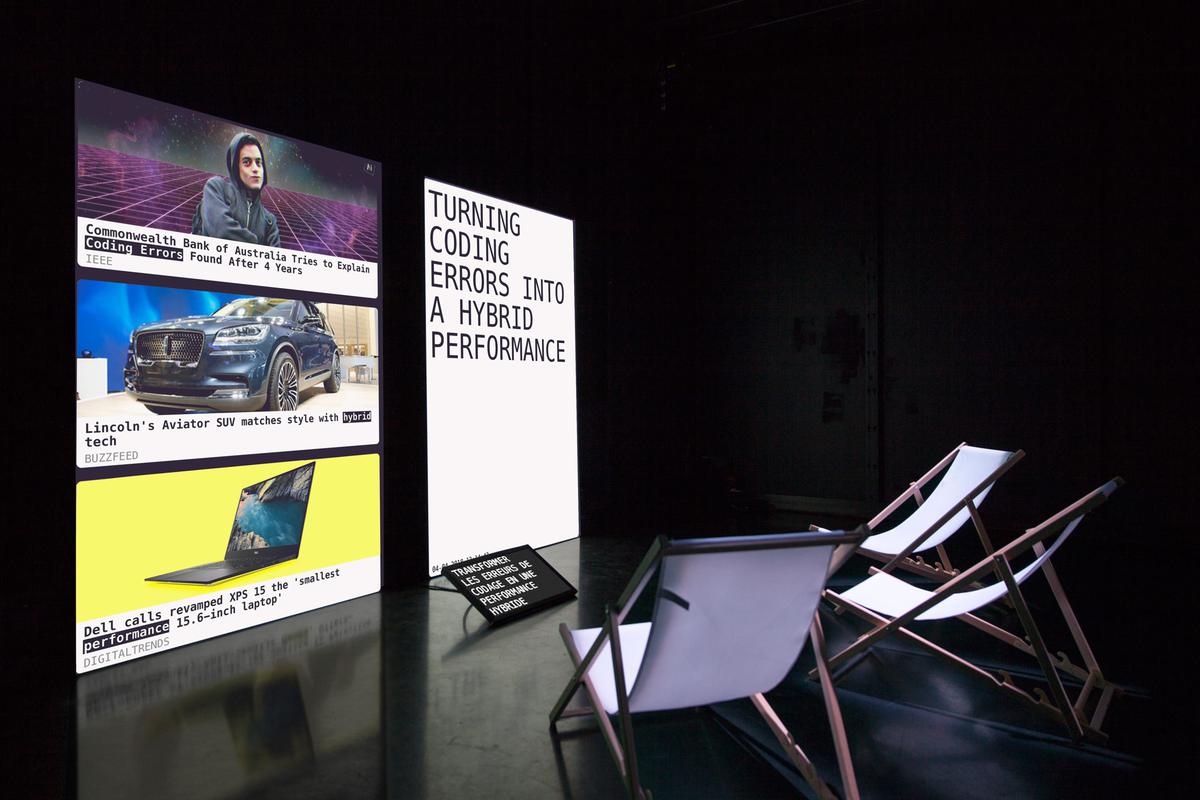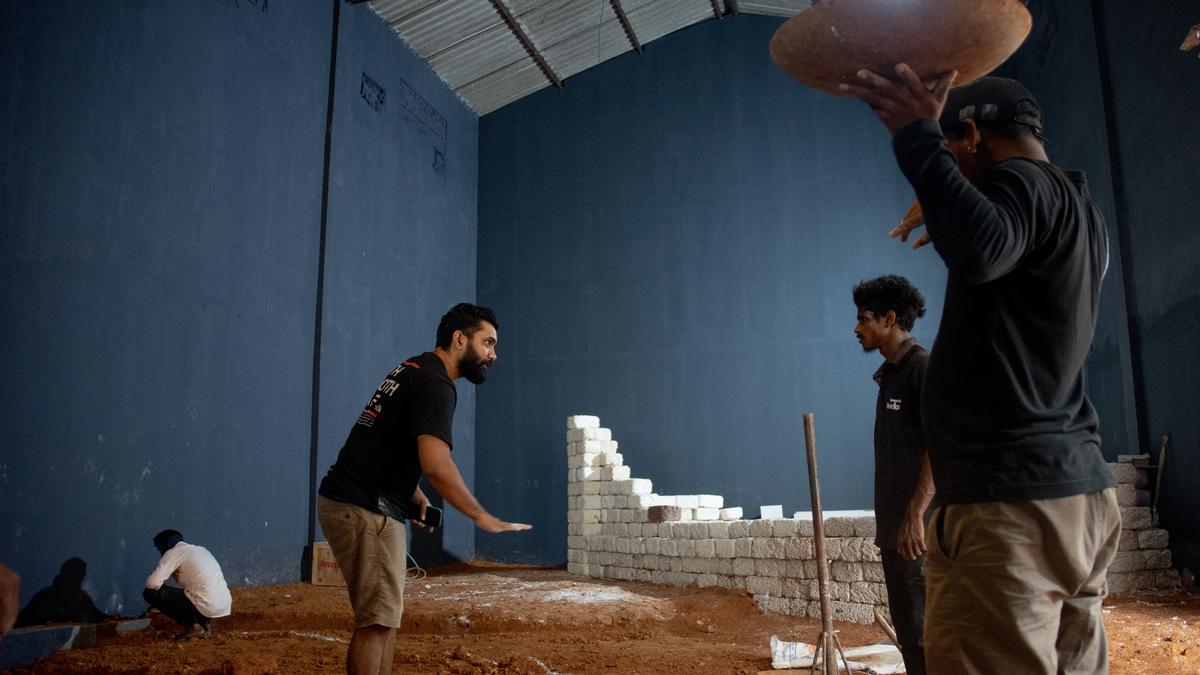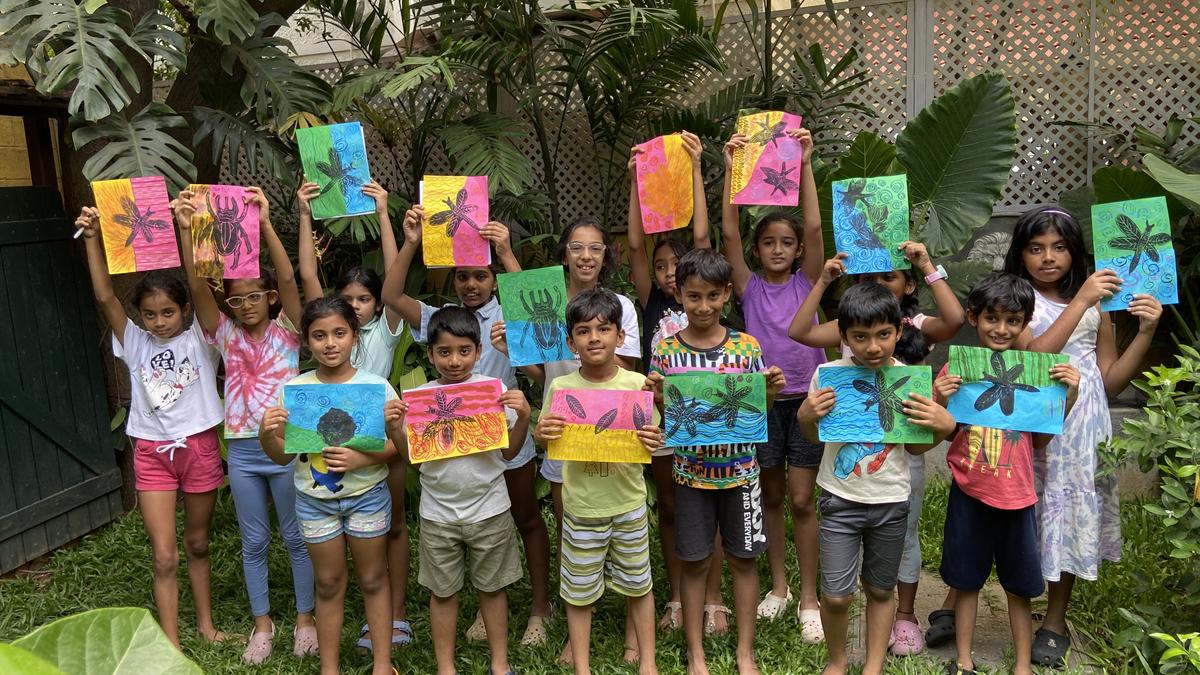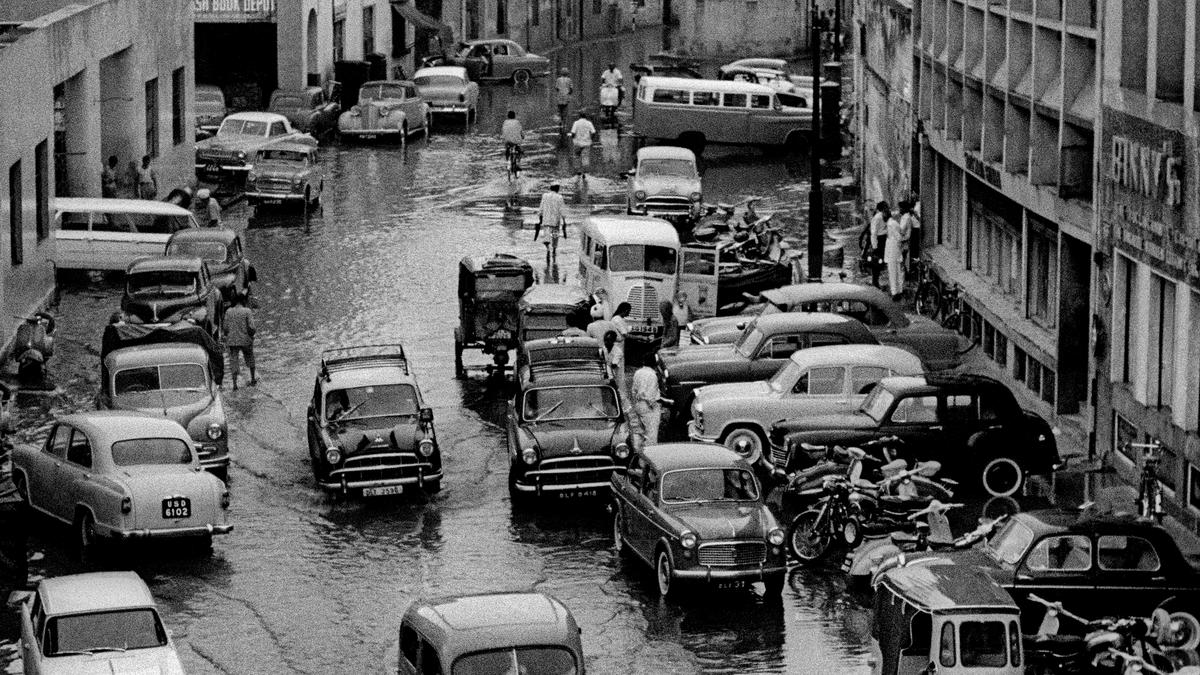Artists setting up at the Kochi-Muziris Biennale
| Photo Credit: Madhu Krishnan
One would expect hope to be the cornerstone of a biennale that’s opening after three demanding years of the pandemic. And while it is, the fifth edition of the Kochi-Muziris Biennale is a lot more — encompassing humour, satire, resilience, joy, protest. The mood, we discover, isn’t as dark as the last edition. “A lot of the artists who are participating were commissioned before the pandemic upturned our lives. They were invited for the collective resilience and resistance that they were showing [responding to their realities] through their work. The exhibition has evolved because we’ve been with them for four years now. And the pandemic has just added another layer of meaning to this,” shares Mario D’Souza, Director of Programmes, Kochi Biennale Foundation.
Sahil Naik’s ‘All is water, and to water we must return’
There’s a lot more singing
One of the large scale installations at Aspinwall is by Goa-based artist Sahil Naik. He tackles the erasure of communities in ‘All is water, and to water we must return’, the story of a forgotten village. Curdi in Goa’s Sanguem taluka was submerged after the construction of the Salaulim Dam in the 1980s. For a brief period every summer, the waters recede to reveal the ruins. And Curdikars return ‘home’, to clean the ruins and sing to it. “It is a beautiful manifestation of hope, community and history,” says D’Souza.
“Naik has worked to archive and document each house. He’s also interviewed everybody who remembers the village. At the biennale, a part of the landscape has been reconstructed, and as you walk through it you will hear Konkani songs — laments and prayers, but also stories of hope and love — in 5.1 surround. The idea builds on a Konkani saying that Naik has translated: ‘In order to save a story, you must narrate it to as many people as you can.’ We will all become witnesses of this history that is almost erased.”

Martta Tuomaala’s FinnCycling-Soumi-Perkele!
Protest on an exercise bike
“One of the many video installations at the biennale is a work by Finnish indigenous Martta Tuomaala, which shows her working out on an exercise bike and speaking,” says D’Souza. FinnCycling-Soumi-Perkele! is one woman’s gritty protest against all-male austerity politics, and as the artist says on her website, it “is a combination of politics, dark humour and protest rap in the form of an indoor cycling exercise”.

Disnovation’s ‘Predictive Art Bot’
Art, bots and IRL
An installation by Paris-based collective Disnovation takes real time news and converts them into art titles. Titled ‘Predictive Art Bot’, it has an algorithm automatically generating concepts for artworks by combining keywords from news and article headlines in real time. “It plays on the irony of how art making can be quite insensitive and pretentious, while still being heavily derived from the miseries of the world,” explains D’Souza.
“This edition looks at artistic practices primarily from Asia, Africa and Latin America. There’s a really large contingent of artists from these continents — to show the similarity of our context, but also the social and political realities of our times.”Mario D’SouzaDirector of Programmes, Kochi Biennale Foundation
Fort Mural Project
Street art hasn’t started popping up yet and that’s because KMB is taking it slow and steady. “Instead of having everything in place at the beginning, we are staggering our programmes across all four months, so that there’s always something to engage with,” says D’Souza. The Fort Mural Project, for instance, will start in January. “It pays homage to the mural, an art form that came before the advent of street art. But it will also envision the mural as a social space,” he adds, sharing that 10-12 artists from across Asia have been invited to come and create murals.
15 venues strong
While a few warehouse, including the Trivandrum warehouse in Mattancherry, is being added to the Students Biennale, the main event will occupy spaces that “we know and we’ve used in the past”. As D’Souza explains: “Because we are coming from the fatigue of the pandemic, we are trying to keep the biennale contained, though we are still 15 venues strong.”





